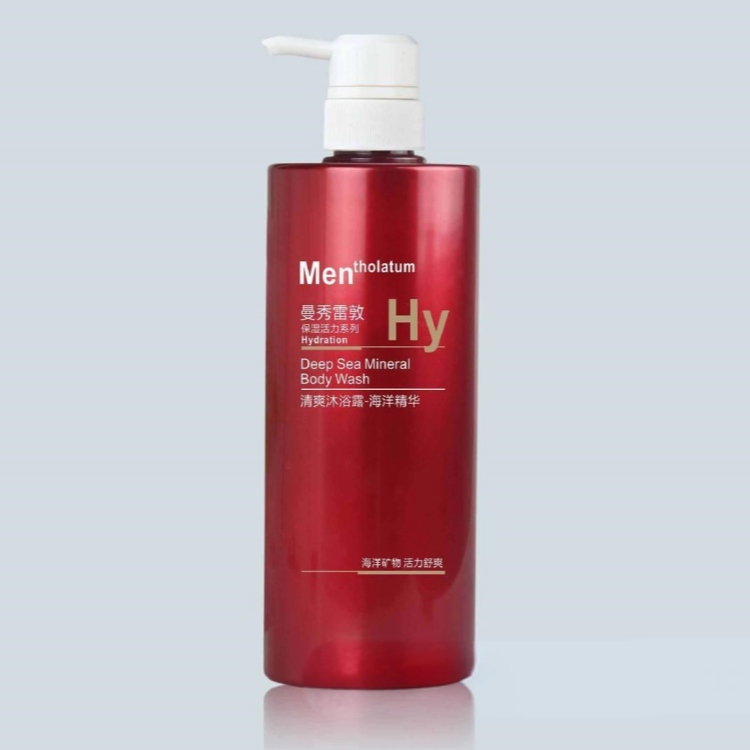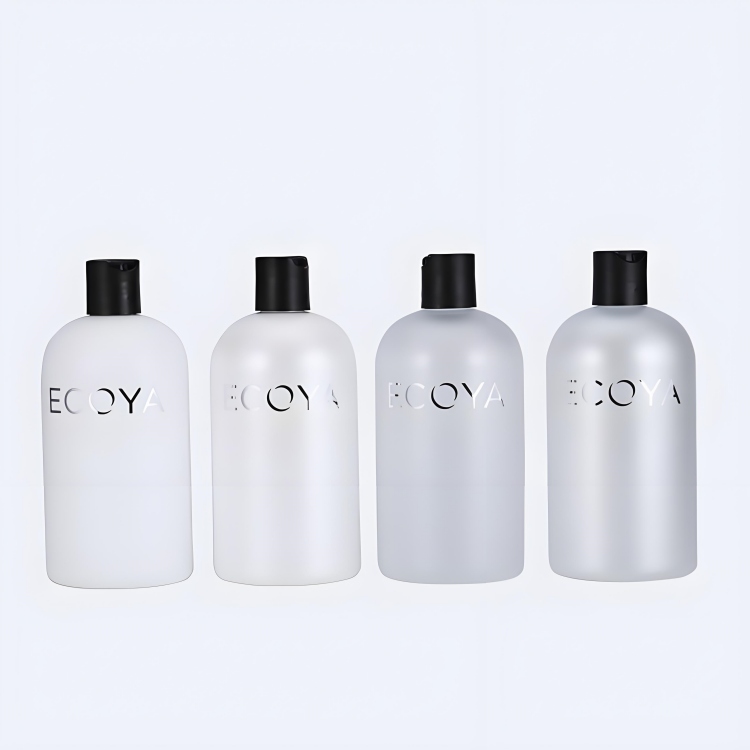

In the competitive landscape of consumer goods, isn't just about containment; it's a crucial element of branding. Hot stamp labeling on plastic bottles offers a sophisticated and eye-catching solution to elevate your product's perceived value and shelf appeal. This article provides a deep dive into the world of hot stamping plastic parts, exploring its benefits, processes, and best practices to help you make informed decisions and achieve stunning results. Whether you're launching a new product or revamping your existing packaging, understanding the nuances of hot stamping can give your brand a significant competitive edge. Learn what is stamping label made on custom plastic material.

The Allure of Hot Stamping: Why It Works on Plastic
What makes hot stamping such a compelling choice for plastic bottle labels? The answer lies in its ability to create a visual and tactile impact that sets your product apart. The application of metallic foil delivers a metallic finish that exudes quality and luxury, instantly grabbing the attention of potential customers. This hot stamping label process is particularly effective because it doesn't just add color; it adds texture and depth to the label, enhancing the overall sensory experience. It’s a great way to make labels that are memorable.
Furthermore, the durability of hot stamp decoration ensures that your brand message remains intact throughout the product's lifecycle. Unlike some other labeling methods, foil stamping resists scratching, fading, and peeling, maintaining its pristine appearance even under demanding conditions. This longevity reinforces your brand's commitment to quality and reinforces a positive impression on consumers. This method is used for hot stamping that should last long.
Unlocking the Potential: Industries Thriving with Hot Stamped Plastic
Hot stamping finds widespread application across diverse industries, each leveraging its unique benefits to enhance their product packaging. The cosmetic industry, for example, often relies on hot stamping to create an aura of luxury and sophistication for their plastic containers. The use of gold and silver foils on shampoo bottle and other personal care products instantly elevates their perceived value, attracting discerning consumers.
The food and beverage industry also benefits from the visual appeal and durability of hot stamping. Made on custom plastic bottles can get eye-catching and informative labels, enhancing shelf presence and conveying important product information. In the pharmaceutical sector, hot stamping can be used to add security features and branding elements to plastic containers, ensuring product authenticity and preventing counterfeiting. These are the plastic parts with added value.
Materials Matter: Choosing the Right Plastics and Foils
The success of hot stamping hinges on the careful selection of both plastic materials and foils. When it comes to plastic, it’s crucial to choose a substrate that provides good adhesion and withstands the heat and pressure of the hot stamping process. Different plastic materials like polypropylene and polyester each offer distinct properties that make them suitable for different applications. Polyester offers excellent clarity, while polypropylene provides good chemical resistance.
The choice of foil is equally critical. Hot stamping foils are available in a dazzling array of foil colors and foil options, ranging from traditional metallic shades to holographic foils and specialty finishes. Consider the desired aesthetic, budget, and the label material requirements when selecting a foil. Using a compatible combination of foil and plastic is essential for achieving optimal results.
The Art of Design: Creating Impactful Hot Stamped Labels
Designing for hot stamping requires a different approach than designing for traditional printing methods. Simplicity is key. Clean lines, bold typography, and minimal gradients tend to yield the best results. Overly complex designs may be difficult to transfer accurately, especially on curved surfaces. Therefore, you should choose the best design.
Consider the plastic bottle shape when creating your design. Curved or irregular surfaces may require specialized tooling and techniques to ensure consistent foil transfer. Also, think about the foil color and finish. Metallic foil colors like gold and silver can create a luxurious and premium look, while holographic foils add a touch of modernity and visual interest. You need to help you choose the best look for your product.
Beyond Aesthetics: The Practical Benefits of Hot Stamping
While the visual appeal of hot stamping is undeniable, it also offers several practical benefits. The durability of the foil finish makes it resistant to scratching, fading, and chemical exposure, ensuring that your label remains intact even under harsh conditions. This is particularly important for products that are exposed to frequent handling or environmental elements.
Hot stamping also offers enhanced security features. Holographic foils can be used to prevent counterfeiting and ensure product authenticity. The permanent nature of the foil transfer makes it difficult to tamper with or remove, providing an added layer of protection for your brand. The labels offer a durable finish to help protect against counterfeiting and ensure product authenticity.

Hot Stamping vs. Other Labeling Techniques: Making the Right Choice
Choosing the right labeling technique for your plastic containers requires careful consideration of your specific needs and objectives. Compared to pressure-sensitive labels, hot stamping gives a more premium and durable finish. Pressure-sensitive labels are easier to apply and offer greater design flexibility, but they may not be as resistant to wear and tear.
Compared to screen printing, hot stamping provides a cleaner and more precise metallic finish. Screen printing is better suited for large-area coverage and complex multi-color designs. In-mold labels are integrated into the plastic during the molding process, offering exceptional durability, but they are more expensive and less flexible in terms of design changes.
The Hot Stamping Process: A Step-by-Step Guide
The hot stamping process involves a series of steps to transfer the foil design onto the plastic bottle surface. First, a hot stamp die, typically made of magnesium, brass, or copper, is engraved with the desired design. The foil is then positioned between the hot stamp die and the plastic substrate.
Next, the heated die presses down onto the foil, applying heat and pressure to activate the adhesive layer on the foil. This causes the foil to bond to the plastic surface while releasing from the carrier film. Finally, the die is lifted, leaving behind the transferred foil design. The temperature, pressure, and dwell time must be carefully controlled to achieve optimal results.
Troubleshooting Hot Stamping: Common Challenges and Solutions
Like any manufacturing process, hot stamping can present certain challenges. One common issue is poor adhesion, where the foil fails to properly bond to the plastic surface. This can be caused by a variety of factors, including improper surface preparation, incompatible materials, or incorrect die settings.
Another challenge is blurring or distortion of the foil design. This can occur if the die temperature is too high, the pressure is too low, or the dwell time is too long. Carefully adjusting these parameters can help to resolve these issues and achieve crisp, clean results. It's important to get the best value from the process.
The Future of Hot Stamping: Innovations and Trends
The world of hot stamping is constantly evolving, with new innovations and trends emerging to enhance its capabilities and applications. One exciting development is the use of digital hot stamping, which allows for greater design flexibility and faster turnaround times. Digital hot stamping eliminates the need for physical dies, enabling on-demand customization and variable data printing.
Another trend is the increasing use of sustainable materials in hot stamping. Eco-friendly foils and plastic substrate are becoming more widely available, reducing the environmental impact of the hot stamping way to make labels. These advancements ensure that hot stamping remains a relevant and sustainable labeling solution for the future.
Getting Started: Partnering with a Hot Stamping Expert
Embarking on a hot stamping project can seem daunting, but partnering with an experienced hot stamping provider can streamline the process and ensure successful outcomes. A reputable provider can offer guidance on material selection, design optimization, and process control, helping you to create a striking label that meets your specific needs and objectives.
By collaborating with a hot stamping expert, you can tap into their knowledge and expertise, avoiding costly mistakes and achieving the desired aesthetic and functional results. This collaborative approach ensures that your hot stamping project is executed efficiently and effectively, delivering a final product that elevates your brand and resonates with your target audience. Go a long way to find a good partner.
Table 1: Comparing Hot Stamping to Other Labeling Options
| Feature | Hot Stamping | Pressure-Sensitive Labels | Screen Printing | In-Mold Labeling |
|---|---|---|---|---|
| Visual Appeal | Premium, metallic finish | Good, design flexibility | Vibrant colors | Integrated, seamless |
| Durability | Excellent, scratch-resistant | Moderate, may peel/fade | Good, abrasion-resistant | Exceptional, permanent |
| Cost | Higher initial cost | Lower initial cost | Moderate cost | Higher initial investment |
| Design Flexibility | Limited, simpler designs | High, wide range of options | Good, complex designs | Limited to mold design |
| Application | Slower, requires specialized equipment | Fast, easy application | Moderate speed | Integrated during molding |
Table 2: Factors to Consider When Choosing a Hot Stamping Provider
| Factor | Description | Importance |
|---|---|---|
| Experience & Expertise | Years of experience, industry knowledge, technical capabilities | Crucial for achieving high-quality results and avoiding costly mistakes |
| Material Selection | Ability to source a wide range of foils and plastic substrate | Ensures compatibility and optimal performance |
| Design Assistance | Support with design optimization for hot stamping | Helps to create impactful labels that meet specific needs |
| Quality Control | Rigorous quality control processes to ensure consistent results | Minimizes defects and ensures customer satisfaction |
| Customer Service | Responsiveness, communication, and support throughout the project | Creates a positive and collaborative working relationship |
Key Takeaways:
Hot stamping offers a premium and durable labeling solution for plastic bottles.
The process involves using heat and pressure to transfer metallic foil onto the plastic surface.
Careful selection of plastic materials and foils is crucial for success.
Design simplicity and consideration of bottle shape are essential.
Hot stamping provides enhanced security features, such as holographic foils.
Compared to other labeling techniques, hot stamping offers a unique combination of aesthetics and durability.
Partnering with a hot stamping expert can streamline the process and ensure optimal results.
Digital hot stamping and sustainable materials are emerging trends in the industry.
Poor adhesion and design distortion are common challenges that can be overcome with careful process control.
Hot stamping can elevate your brand and create a lasting impression on consumers.





